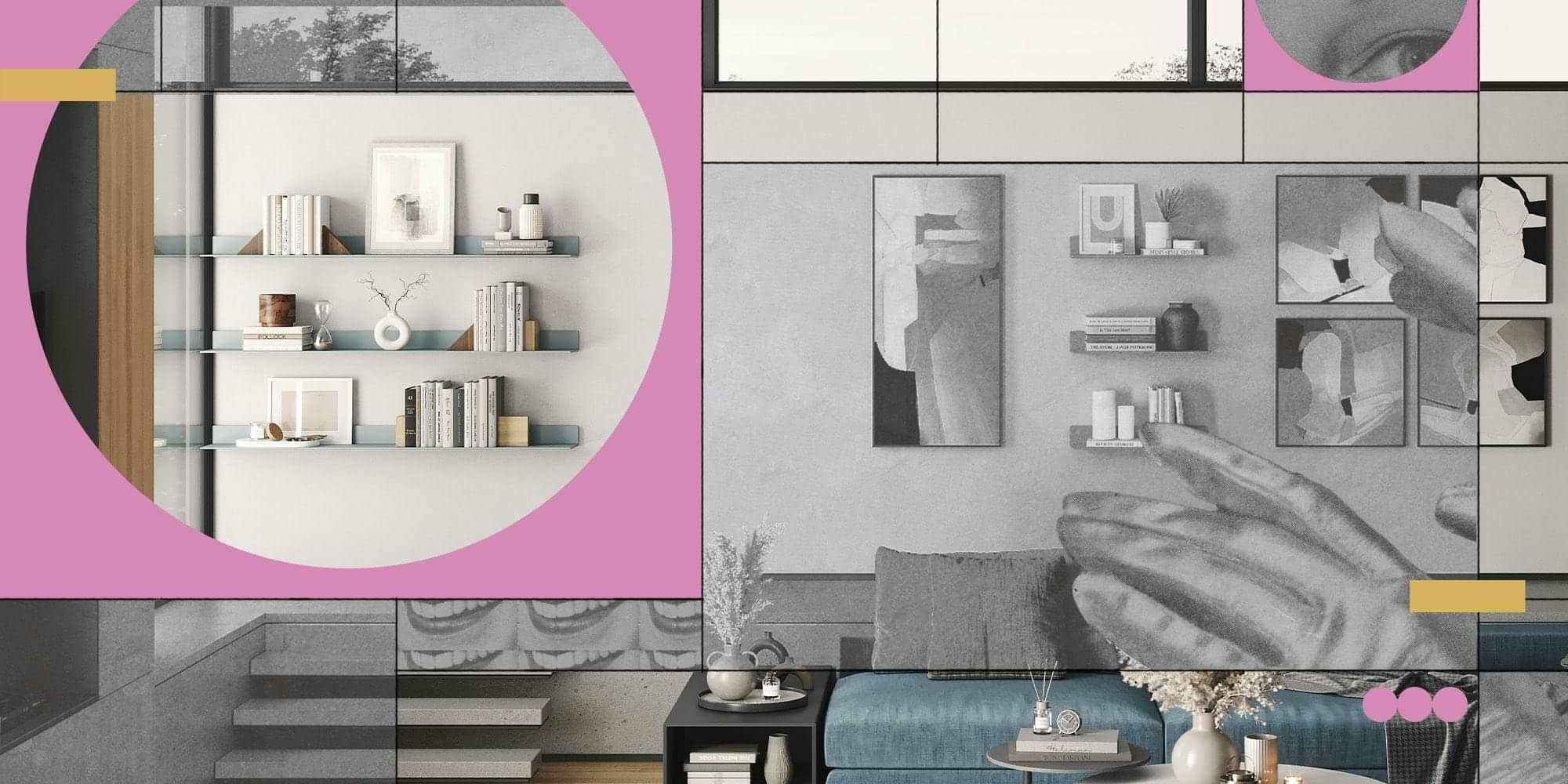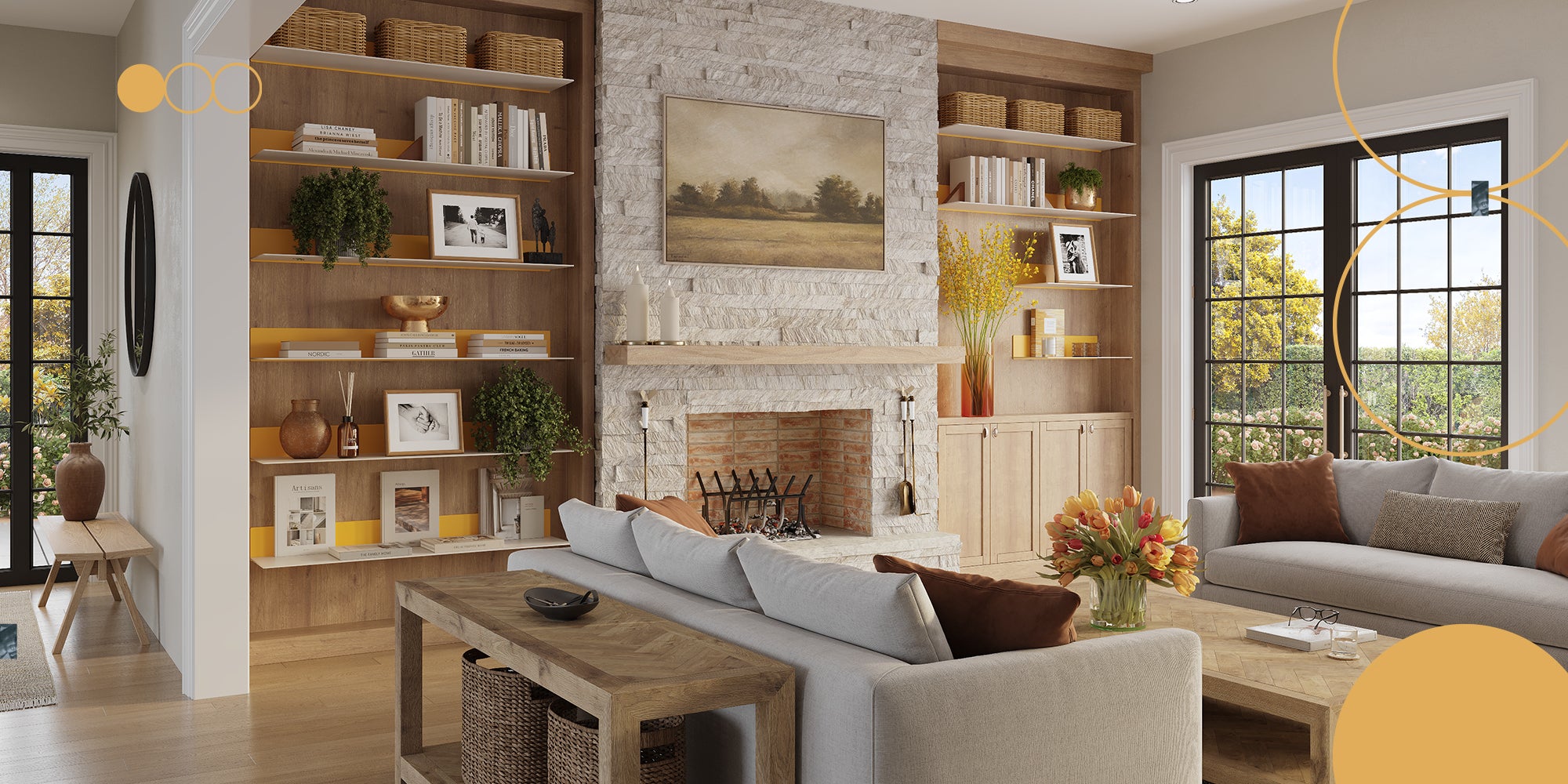Unlock your door to the scent of fresh citrus, switch on your favorite Alexa playlist, slip under a cozy fleece blanket in front of a crackling fire, and you have immersed yourself in sensory decoration. Home decoration has evolved to include all five senses, providing a refuge from unpleasant sensory stimuli experienced outside the home. Think blaring horns, the stench of exhaust fumes, bad food establishments — the list goes on.
In contrast to these unsavory sensory experiences, we have the comforts of home––the delightful sights, sounds, smells, tastes, and textures that turn our interior spaces into a relaxing sanctuary we love returning to. If your house or apartment requires a sensory upgrade, you’ll want to keep reading.

Sensory Decoration: A Moveable Feast of the Senses
Sensory decoration goes beyond swapping outdated decor for something new and on-trend. It stimulates all five senses to create a cozy and calming home environment that alleviates stress and improves one’s physical and emotional well-being. By appealing to the senses, families can find personal and meaningful ways to decorate, sparking joy from room to room.
Sight: Color, line, shape, space, and light.

The visual aesthetic has always been the emphasis of interior decoration. Color, line, shape, space, and light all factor into selecting surfaces, furniture, fabrics, and decor. When it comes to color palettes, interior designers recommend choosing three or fewer colors. Too many hues can make a home appear crowded, cluttered, and even smaller. To maintain cohesion in your space, consider painting all the walls in one neutral color and punctuating the rooms with pops of color.
Another paint color technique is the monochromatic color palette. Select one hue, such as blue, and vary the shades of that color from light to dark. A monochromatic color scheme can make a room appear larger.
Beyond paint, you can decorate your home with different wood tones to give your space a warm look and feel. Light woods are favored in Scandinavian and Japandi design styles, while dark woods make a traditional or rustic-themed style come to life.
Sight Tips
- For a clean yet energetic color palette, paint the walls in a neutral shade, then add pops of color with decor accents such as pillows, textiles, and objects.
- Highlight your collectibles and prized possessions on floating shelves using downlights.
- Create a vision board. Whether you want to lose 10 pounds to fit into your summer swimsuit, travel to a faraway destination, or earn a college degree, you can keep your goals and aspirations top of mind when you frame them on a wall. You can find photos and sayings for your vision board in old magazines.
- To help you sleep soundly, choose a calming bedroom paint color such as pale blue, pink, or green.
- Choose Curvy furniture and decor that provides a sense of calm compared to jagged edges that can make one feel uneasy.
Sound: Minimize noise, maximize relaxation.

The sounds we hear soothe or distract us. Soft music relieves stress and lowers blood pressure. But loud noises from noisy neighbors or outside can bounce off the walls and cause anxiety. The following tips will help to minimize noise and provide relaxation when you’ve had a stressful day or are trying to get some shut-eye.
Sound Tips
- Relax to the sounds of nature. Turn on a meditation app to relax to the sounds of the ocean, the rain, or chirping birds,
- Design a music room. A music room can be a relaxing and fun environment for family and friends. Whether you use the space for musical instruments, family jam sessions, or to store your vinyl record collection, music rooms make a great space to tune in and turn up the volume. Make sure to pick up quality headphones for when your kiddos are asleep.
- Muffle sound with fabric. Sound travels; if your walls are poorly insulated, your home might have bad acoustics. A great way to dampen and absorb sound is with fabric. Consider a wool rug on the floor, upholstered furniture, wall tapestries, and sound-blocking curtains that can minimize outside noise by up to 60% to 80%.
Scent: Trigger positive vibes.

Often overlooked, the sense of smell is an essential element in sensory decoration. According to scientific research, fragrances such as lavender and rosemary can reduce blood pressure and lower cortisol levels; Cortisol is the body’s stress hormone. Scents can also trigger different moods, such as relaxation and energy, and bring back heartwarming and sentimental memories: the scent of cinnamon in your grandmother’s kitchen, the cologne worn by your significant other on your first date, or the smell of lilacs and peonies from your bridal bouquet.
Scent Tips
Select scents based on the ambiance you want to evoke or the room's purpose.
- Choose a clean, fresh scent for the bathroom, such as linen or lavender, or place a fragrant lavender plant on an open shelf.
- Burn a stick of sandalwood incense in the bedroom when it’s time to unwind.
- Use mint and basil in the kitchen to eliminate food odors.
- Create a cozy vibe in the living room with a vanilla-scented candle.
- Love aroma therapy? Sprinkle a few drops of essential oils in a reed diffuser.
- Use an air purifier to eliminate pet odors like the infamous litter box.
Touch: Textures that make you feel good.

Let’s not forget the sense of touch. Design elements have different textures from shiny and smooth marble countertops to the rough surfaces of brick and stone. Textured fabrics such as furry pillows, warm and soft huggable blankets, and carpeting feel soft on the face, hands, and feet. Window treatments and wallpaper or distressed furniture with unique patterns, carvings, and finishes feel good to touch and add warmth and character to a room.
Touch Tips
- Add interest to a smooth leather sofa with faux fur pillows and a fur rug.
- Implement texture with live edge side tables and distressed furniture and shelving.
- Warm up a room with an alpaca throw on the back of a chair that you can wrap around yourself later when you’re ready to curl up with a good book.
- Install carpeting in the bedroom to cushion and warm your feet.
Taste: Mouth-watering design elements.

Last, but certainly not least, we have the sense of taste. Foods and beverages make exceptional sensory decor ideas for every day, on special occasions, and around the holidays. Want to stimulate everyone’s hunger palate? Color psychologists recommend decorating the kitchen in warm colors, such as red, yellow, and orange, to stir the appetite. If you’re not ready to paint all the walls red or orange, you can pull the colors in using artwork, potholders, and dish towels to get your feet wet.
Taste Tips
- Fill a bowl with fresh fruit that you can eat when it ripens.
- Decorate the fireplace with candy canes and hang gingerbread cookies and hard candy ornaments on the tree during the holiday season.
- Set up a cafe corner in the kitchen with your favorite beans, brews, and a coffee grinder for the taste of freshly ground beans. Don’t forget the cinnamon and nutmeg spices. Can you taste the aroma?
- If you’re hosting a Superbowl or holiday party, decorate the table with edible holiday or football-themed decor with a sumptuous cake smack in the middle as a centerpiece.
- Create a cocktail area with enough glassware for a well-stocked bar and a fridge to store fresh garnishes and frozen glasses.
- Consider mounting floating shelves in the kitchen to keep your cookbooks and spices handy to whip up savory recipes.
Designing a home with sensory decoration in mind can transform a space from meh to magnificent, making your home feel uniquely personal, inspiring, and beautiful.




Share:
The Psychology of Shelf Organization: How Your Shelves Affect Your Mindset
8 Home Decor Tips for Reducing Stress and Anxiety